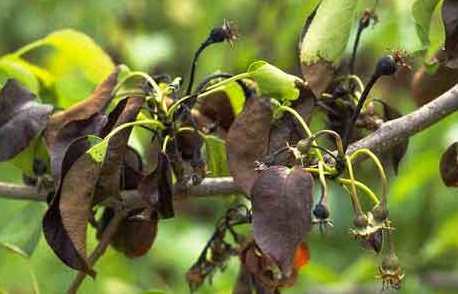Last updated on November 15th, 2016
Our site is reader supported, this means we may earn a small commission from Amazon and other affiliates when you buy through links on our site.
Pruning Pyracantha Firethorn
If you have a pyracantha bush, but your’e not sure how to prune it and when, then our short guide, should be able to guide you through the process and answer a few questions you may have. The good news is pyracantha are very easy to maintain and prune.
Most pruning, is usually done to help maintain the shape of the plant, whether its trained against a wall or grown as a beautiful hedge.
Why it’s important, not to prune out, to much of the previous years growth
The main thing to take into account when pruning your pyracantha, is that they produce their flowers on the previous years growth. This means, when pruning your plant, you need to try and leave as much of last years growth as possible to maintain the fantastic show of berries you get from Autumn, which usually last well into winter.
Hard pruning overgrown plants
If you have a pyracantha plant that has gotten a little out of control and is well overgrown and you want to cut it back hard, the good news is they do respond well when pruned back hard. For this reason, you don’t need to worry about damaging or killing the plant, a hard pruning will encourage the pyracantha to bush out more, and form a more compact, dense plant.
Pruning wall trained plants
If your lucky enough have a beautiful wall trained pyracantha, then you can prune it to a permanent frame work. Remove the current years grow in late Summer, so that the berries are more visible and remove any side shoots that are forming.
If you want to extend the framework to form a larger plant, then tie new side shoots into the wires or trellis framework.
Your secateurs not up to the job – See our top 5 recommended secatuers
Training Pyracantha to a wall
If you’re planting pyracantha, to be trained against a wall or fence, then plant it approximately 30-40cm away from the wall. This is important, as it helps ensure that the plant does not dry out to much, this is because, the soil at the side of a wall is usually dry, so planting slightly away from the wall helps keep the roots moist.

Pyracantha are usually strong enough to hold themselves against the wall, however they would probably benefit from being ‘tied into the wall’, this can be done by either running wires along your wall and then tying the pyracantha to the wires with string or cable ties.
Be careful not to fix ties to tightly, as this can damage the plant as it grows
When using cable ties be very careful not to tighten them to tight as they will damage the plant. We would recommend removing the ties every year, before putting new ones on so that they do not become to tight around the branches.
Consider training on trellis work
Another way to train a pyracantha to the wall is by using wood or plastic trellis work, the plant can then be fixed to the trellis in the same way, using string or cable ties.
Trellis can also make an excellent screen, while you wait for the plant to establish.
Do you need trellis? – View the fantastic range available on Amazon.co.uk
Pruning to help prevent diseases
Unfortunately pyracantha are subsectable to ‘fireblight’ and ‘pyracantha scab’, to help combat this, when you spot any of these diseases on the branches, they should be pruned out straight away to help prevent further spread of these diseases.

Other articles you may be interested in:
How to make Pyracantha Jelly | Pyracantha Varieties | Pyracantha Diseases | Pyracantha Cultivation | Pyracantha Problems | How to plant a Pyracantha Hegde

2 Comments
Thanks,, you informed me of what i needed to know
Thanks very helpful look forward to good display next year